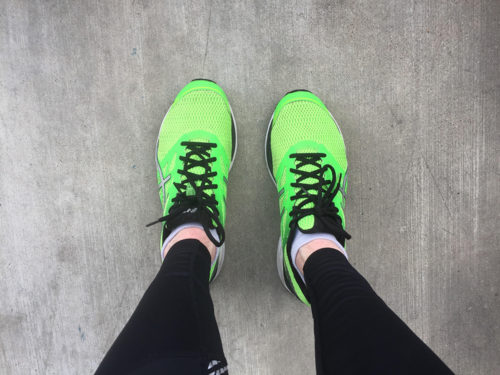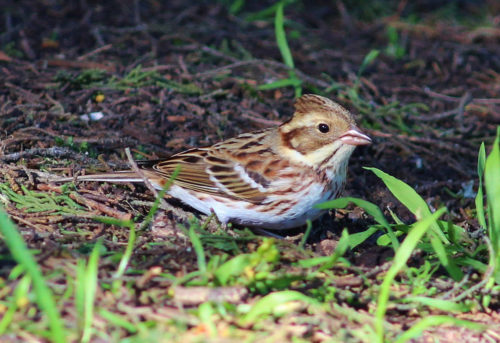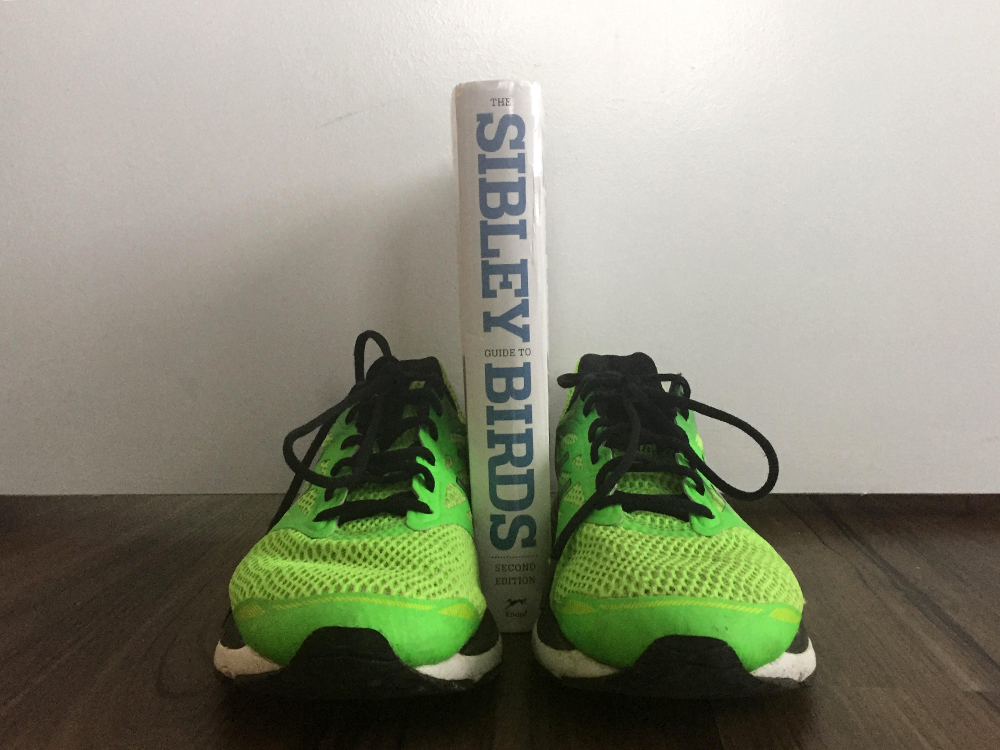I started birding when I was five years old, about (mumble) years ago. I’ve also been a serious runner for well over a decade, and will continue as long as my knees allow. With these two outdoor pursuits (I hate treadmills), there’s bound to be overlap; I’ve found myself sprinting after the chance to see a rare bird (McKay’s Bunting, 2012) and, due to my long-standing aversion towards headphones, I definitely notice birds while running. The list of species seen while running would be respectable, I’m sure, if I’d ever bothered to write them down.

Nevertheless, I remember a few highlights: Red-necked Phalaropes while doing laps on the lower deck of an Alaskan cruise ship; a Virginia Rail that skirted in front of my feet on a rural road on Vashon Island, Washington; a lifer American Three-toed Woodpecker working a roadside tree stump in deep woods Montana; and a pair of Black Scoters at Discovery Park in Seattle, to name a few. Certainly the most exceptional was a Rustic Bunting that spent a few months wintering with a flock of juncos in San Francisco. As a rarity blown off course from its native Asia, it was well-known in the birding community and conveniently situated along a preferred jogging route only a mile from our apartment at the time.
While I have accumulated a few memories, I don’t have an official tally. It pains me to think about “the list that could’ve been.” Unfortunately, I’d think to myself, too much time has passed.

Then January 1, 2018 happened. I’m not one for New Year’s resolutions but I thought “why not keep track for a year?” This arbitrary date aligns nicely with the starting gun for when birders’ try to find as many species as possible in 365 days, a so-called “Big Year.”
Compared to my brethren who fly to every corner of the U.S. in pursuit of our feathered quarry, my year won’t be “big.” This endeavor is born from curiosity, not competition. I’m just going to keep running three days a week, like normal. I’ll aim for 15 to 20 miles a week following largely urban routes, like normal. Nearly all runs will start from our apartment in Washington D.C., like normal. I will notice birds by sight and sound, like normal. At the end of each run, however, I will take note of what I’ve seen or heard in a Google Sheet.
This endeavor may influence the destination of a few runs, sure, but the emphasis will always be exercise. Being the parent of a young child, spare time is at a premium, and, if given the choice between running and birding, I’ll pick a trim midsection over a plump species list. Rare birds, no matter how exceptional, won’t help me stave off the diabetes.
This way I can reliably pursue both passions—killing two birds with one stone. Or, perhaps, “two runs with one power gel.”
Having never heard of another birder/ runner who’s done this, I sketched out some guidelines:
- No binoculars.
- No driving to special habitats at specific times of year for a light jog just to add a couple species to this ephemeral list.
- If I happen across generous birders with their spotting scopes trained on a new species, I’ll take a look (I wouldn’t want to be rude).
- Birding should not negatively impact my normal distances or pace.
- I will only count wild birds that can be confidently identified by sight or sound.
- I will stop at a few prime locations mid-run to watch and listen; I may even lightly stretch to mask my true intentions.
- I’m not sure where I’ll end up on December 31. I’ll aim for 100 species, but hope for more. Will every bird be recorded? No, many distant silhouettes, quick flyovers and indistinct chip notes will go unidentified.
But that’s birding.
It’s looking good so far: By the end of my second run, I’d already tallied 25 species. Sure, they were on opposite coasts and thus included different sets of easily tallied “common birds.” But still, not bad for freezing temps in January.
My knees held up, too.
